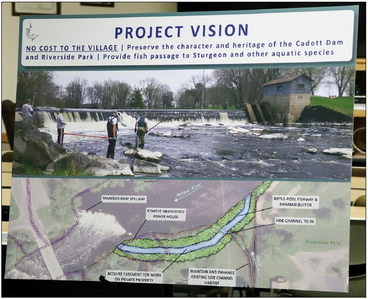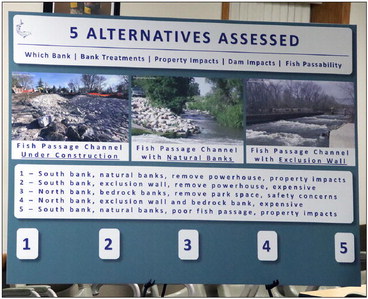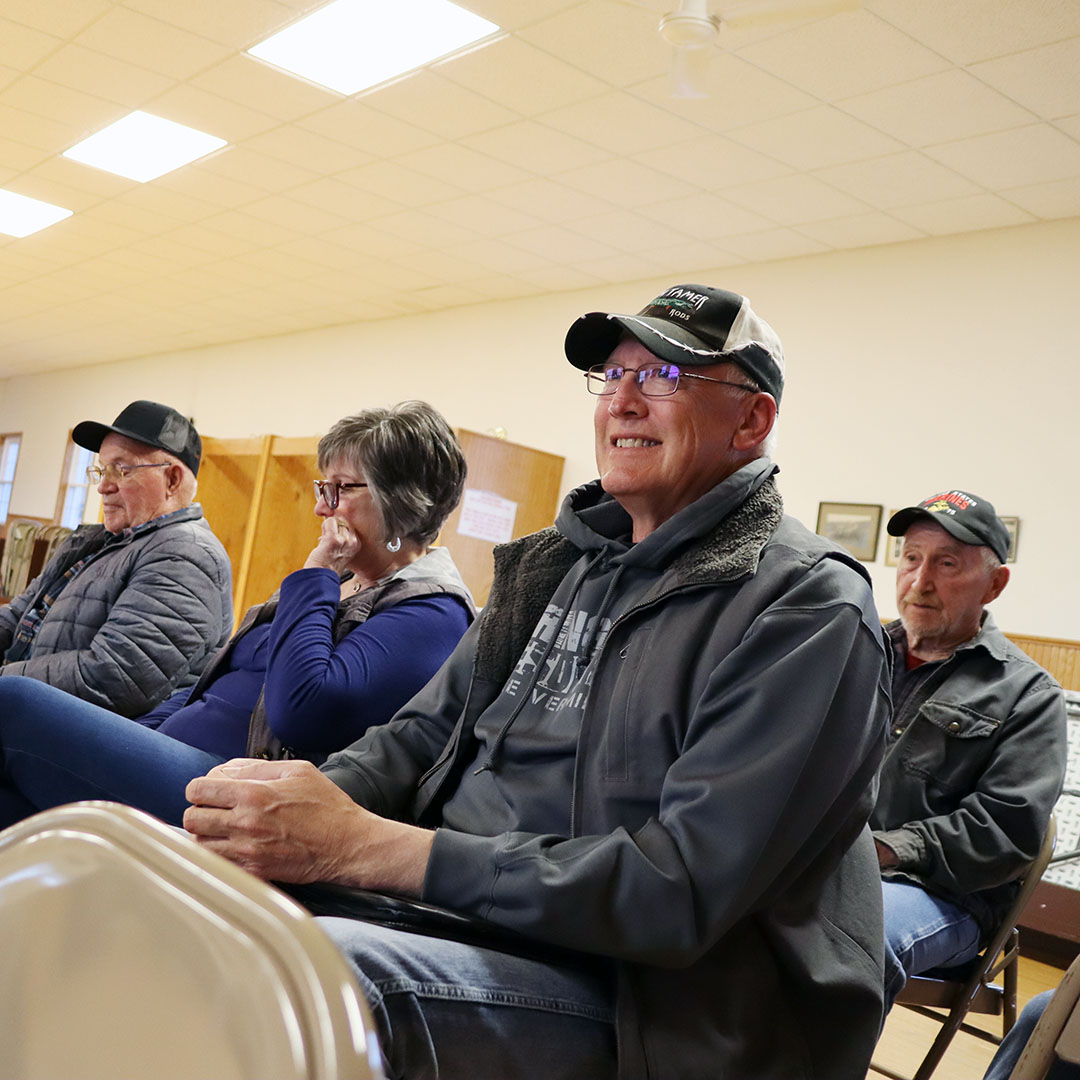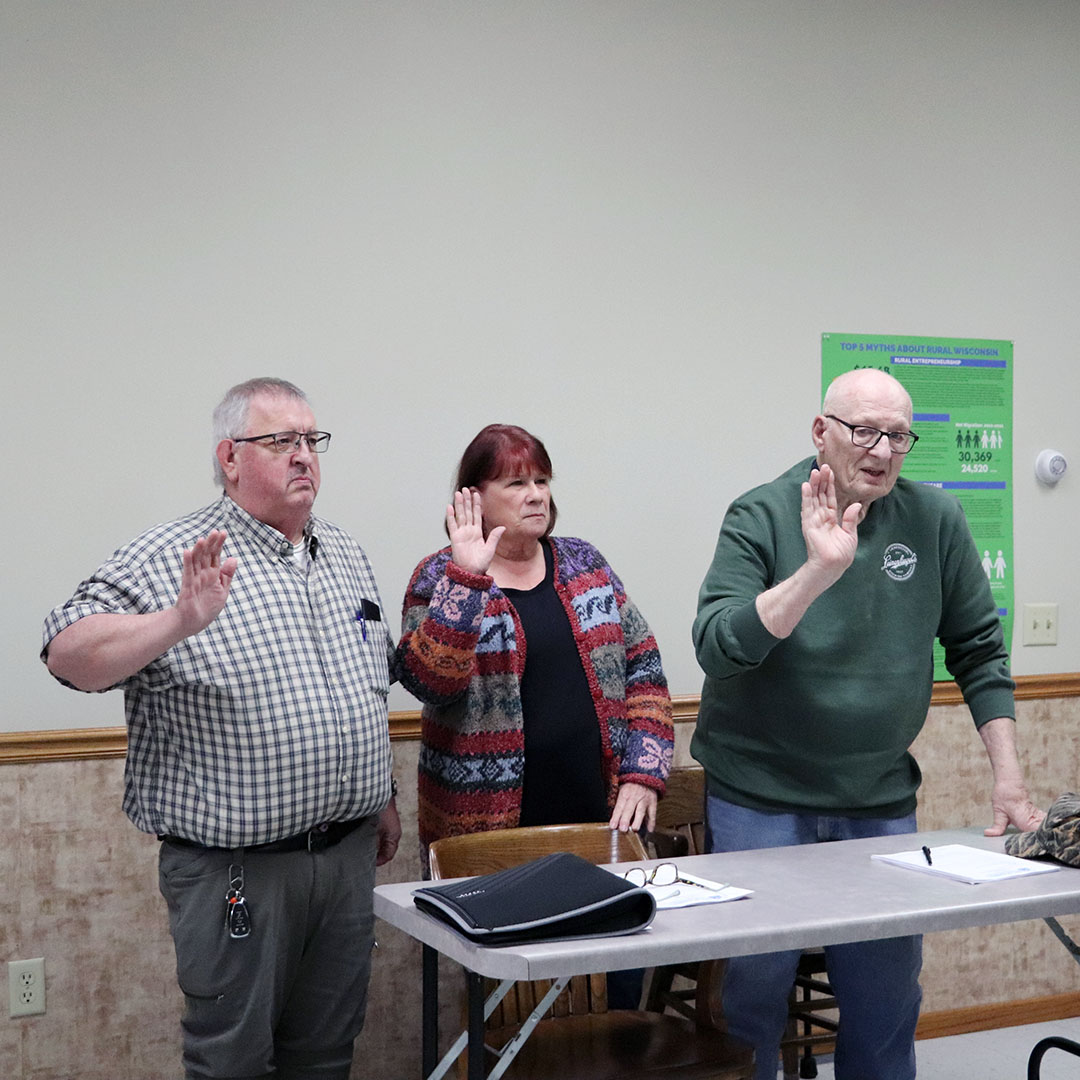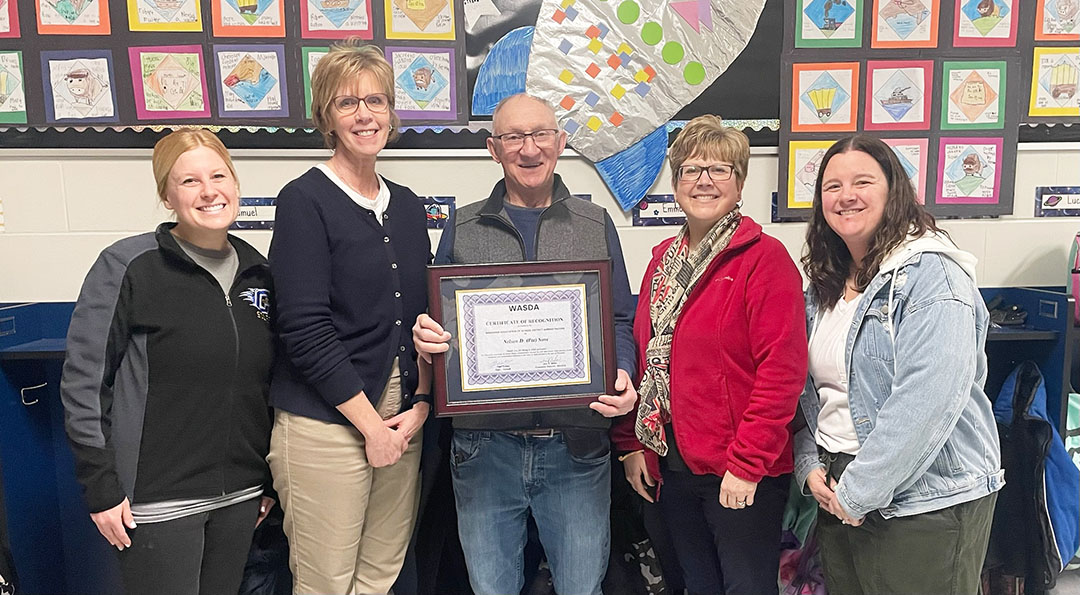Fish passage may open can of worms or increase habitat
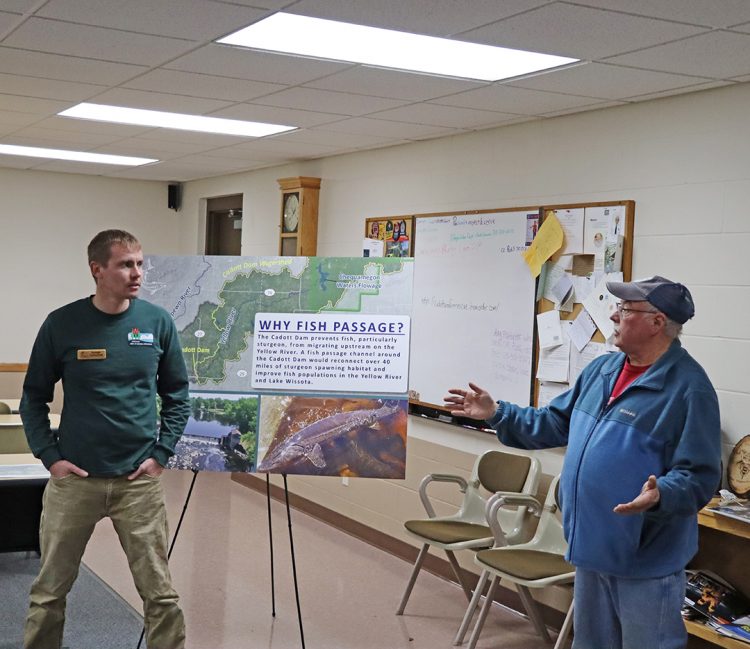

Joseph Gerbyshak, DNR biologist (left), listened to Cadott resident Randy Rykal Dec. 7, about his ideas over a proposed fish passage, which would allow fish species to maneuver around the dam on the Yellow River. Before anything is decided, public input is needed, with forms available to fill out at the Cadott Village office. Photo by Ginna Young
By Ginna Young
Since the early 1900s, when the Cadott dam was constructed, a fish passage has been a bone of contention, with some in favor of a bypass, while others are opposed. Now, a project is again proposed to create a “bridge” to connect the fish species at the dam, with the river heading to Lake Wissota.
With a lot of questions on everyone’s minds, an open house was held Dec. 7, for DNR fish biologists to answer concerns as best they could. To begin, the DNR received a grant from Xcel Energy, to hire a consulting firm, to do the engineering part of the project.
Through that firm, five alternatives appeared for Phase 1 of the project, which is finding the best option to create the passage.
One of the five alternatives would create a nature-like fish passageway on the north side or the south side of the river. The bypass could go through the property adjacent, to look like a creek going around the dam.
By building an exclusion wall, with sheet pile in the river, 10-15 feet out from the bank, fish passage could be placed on the south side.
“But, you wouldn’t have impacts to your adjacent properties,” said consultant Briana Patton.
It also might be possible to tie the channel through the old spillway gates that are no longer operating. Of course, that comes with a price tag.
“There isn’t funding at this point, to do this project,” said Patton.
There are grants out there to help with a project of this scope, but the window is limited to only a few years, so that’s why something has to be done now.
It’s a possibility to save the obsolete powerhouse at the dam, by taking out the spillway gates. That option would require swinging farther south. However, since fish migrate with the current, the passage needs to be as close to the dam as possible, so they can find the bypass.
“Most of the land around there is all private property,” said resident Pat Englert. “How is this going to affect the access for the public to fish those areas?”
According to the DNR biologists, they plan to keep the popular area open for use. Not everyone is convinced that would take place, because of variables to the project that need to be taken into consideration.
“You could lose the whole section, from the bridge to the dam,” said resident Mike Englert.
Still others are concerned over losing the aesthetic appeal of the dam and the adjoining public park.
“As much as I think it’s great and I don’t want to see it gone, either, don’t try to put that in your head that it’s the leading reason not to go with this,” said Eric Weiland, village board member.
Weiland said the powerhouse and spillway will need maintenance, if not replacement or removal, within the next 30-40 years, which is something the village likely won’t be able to afford.
When it comes right down to it, the DNR believes that multiple varieties of fish will have a better breeding habitat if the passage was to occur. It’s believed most of the fish will swim back down through the passage, after spawning, in a short time period in the spring.
Resident Randy Rykal suggested transporting sturgeon up river, instead of building a passage, if the DNR wanted to experiment with breeding grounds on a different area of the river.
“You’d have a perfect environment to test for years and years, because they couldn’t get up any farther, couldn’t get down any farther,” said Rykal.
Unfortunately, the DNR doesn’t have the manpower to conduct a transport and mentioned that locals could think of the area below the dam as a nursery area. The biologists also feel a bypass is the best long-term solution.
For P. Englert, she’s more interested in access to the river below the dam, for kayaks putting in and out.
“That would benefit our community way more than a project like this,” she said.
As a lifelong angler on the Yellow River, M. Englert feels Cadott has a great fish habitat and sees no need for the passage, without more concrete evidence of its benefits.
“It’s opening a can of worms without really knowing what you’re getting, for a reason that doesn’t even seem to be in existence,” he said.
Whether for or against the fish passage, opinions are needed. Forms are available at the village office and need to be returned by Jan. 1, to Weiland or the village clerk. Findings will then be shared early next spring, as to public support or lack thereof.
“Fish were moving upstream naturally before this dam was built, in the 1800s,” said Heath Benike, DNR. “We think that this would have some benefit to the fish population.”
